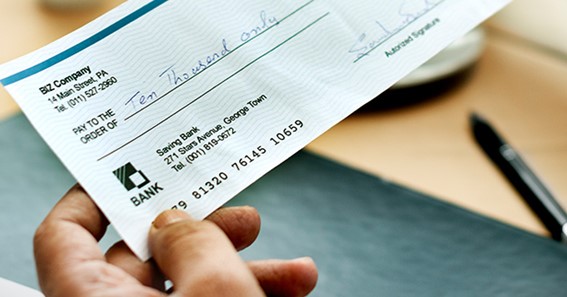What is a cheque?
Whether you are an accountant or an entrepreneur, understanding cheques is as important as learning about the golden rules of accounting. Well, it is essentially a written order in the form of a draft on a bank or other financial institution, signed by the drawer (issuer) and bearing his signature and the name of the payee. It is a request for payment from one person to another, issued under legal authority for the purpose of transferring funds.
The cheque is drawn on a current account at an established financial institution, usually an individual’s savings or checking account; it may be payable to “cash” or “account number”, or to a named person or party. The cheque writer may be an individual, as in personal cheques, or a company (as in company cheques).
A printed version of the cheque (known as a paper cheque) has two sides; both sides are negotiable instruments that allow funds to be transferred between banks and between accounts within the same bank but not across banks.
The parties to a transaction agree that they are entitled to receive the funds on presentation of this document. A cheque is honoured if it is presented for payment at any time during normal banking hours after it has been presented for payment.
click here – Is it a Good Idea to Rent Furniture Online?
Types of Cheque
- Bearer cheque
Bearer cheques are the most common type of cheque in use today. This means that the person who writes the cheque bears the responsibility for honouring it. The holder of the cheque is also known as the drawee (someone who draws).
- Stale Cheque
A stale cheque is a cheque that has been written but not cleared by a bank or other financial institution. It can be used to pay for goods or services bought with it, but not yet paid for by the drawee. If you have a stale cheque, you should contact your bank or financial institution immediately to discuss how to proceed with payment and clearing it.
- Order Cheque
Order checks are usually used when something is being purchased online, such as an online purchase through eBay or Amazon, where one order may require multiple payments from different people or entities.
- Crossed cheque
A crossed cheque or a cancelled cheque is a cheque that has been written by one person and then signed by another person who is not the drawer. This happens when there is a need for two people to sign a financial instrument, such as a cheque, but only one person can be present at the time the document is signed.
Click here – Learn about VeChain Cryptocurrency
- Post-dated cheque
A post-dated cheque is one where you give someone a date by which they have to deposit the funds into your bank account or make payment on the loan they gave you, whichever comes first. This helps protect both parties because if there is no money deposited by then, neither party will lose out because they can take legal action against each other and claim damages from each other instead of from their respective banks or lenders!
